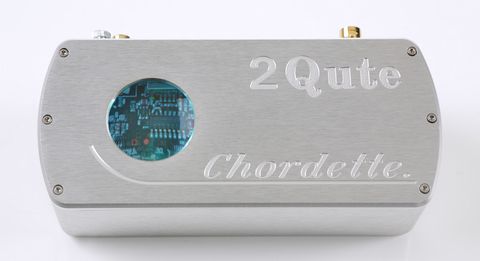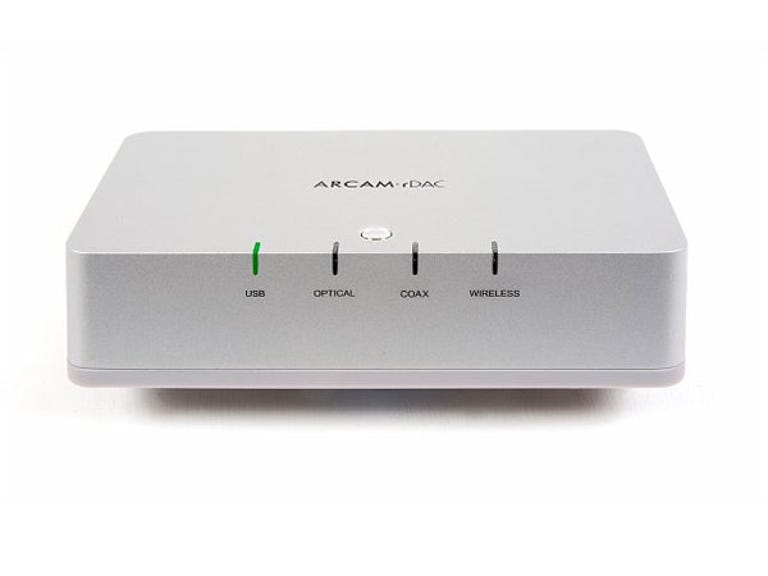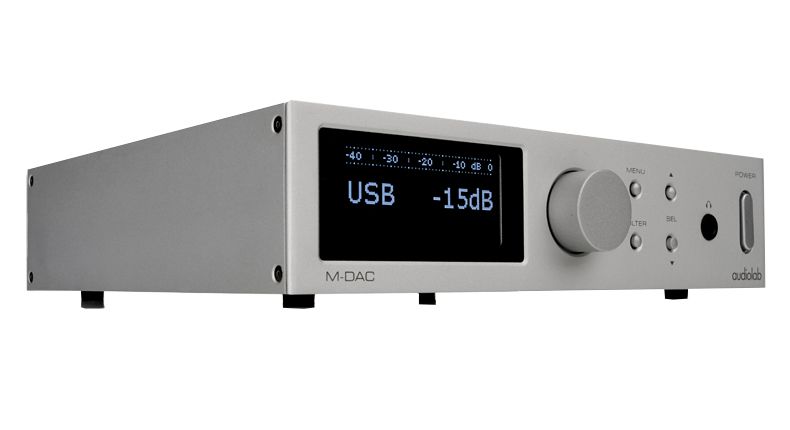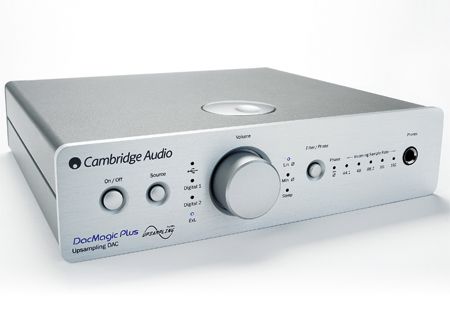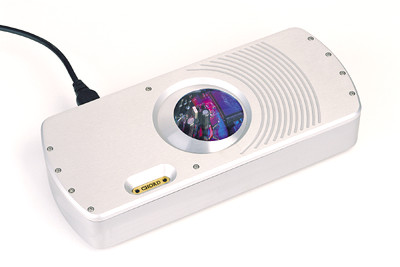Hugo is a new portable DAC by Chord Electronics, which was unveiled four years ago. Because there were – and still are – so many of these products on the market, from Cambridge Audio to Oppo, it didn’t immediately catch the attention of many audiophiles. However, Chord has previously built some excellent household hi-fi systems, so perhaps it should have…
Let’s not forget that almost every new digital-to-analogue converter is essentially an amalgam of bought-in bits that the maker has crammed into a box. Most DAC producers employ a lot of other people’s technology, just like modest British sportscar brands buy engines from one company, suspension from another, brakes from another, and so on. The ‘added value’ is how well they execute it. Chord, on the other hand, does not do so. Rather, it is one of only a few companies (dCS being the other, most well-known British example) that manufactures its own silicon. Rob Watts, Chord’s digital wizard, built the DAC chip that powers all of the company’s DACs.
The Hugo was unique in that, although being a “portable,” it included the latest-generation Chord digital-to-analogue converter and digital filter. It was a very advanced design, even more advanced than the company’s full-size, residential hi-fi devices at the time. Many folks were pleasantly pleased by how great the Hugo sounded through headphones, but yours truly was most impressed by how well it compared to ‘real’ full-size designs when used to feed a home hi-fi system. When configured to provide a fixed line output and powered by its internal battery, the Hugo could be used as a standard DAC.
Of course, the Hugo’s switches are cumbersome, the socketry isn’t as good as it should be, and the unit needs to be recharged on a regular basis – but once you get beyond that, the Hugo is a fantastic performer. I come across a lot of very fine goods that make a lovely sound these days, but this one stands out. The Rob Watts-designed Hugo proved brilliant in the time domain, just as the early DPA Enlightenment DAC of the 1990s to the ground-breaking Chord DAC64 10 years ago. According to Rob Watts, the company’s Watts Transient Aligned digital filter leverages smart mathematics built on a massive Xilinx Field Programmable Gate Array to provide a significantly longer tap-length than that observed in stock DAC chips — 26,000 versus 150 in regular DACs. This distinguishes it from any ‘off the shelf’ DAC chip from companies like ESS, Wolfson, and Texas Instruments.
Chord’s Qute EX has been replaced by the new £995 2Qute, which houses the Hugo’s internals in a more solid, non-portable chassis. It has coaxial and USB digital inputs that handle up to 32-bit/384kHz audio, and optical inputs that support 24-bit/192kHz audio. It can play PCM and DSD files (with DSD64 via all inputs and DSD128 via coaxial or USB, all via DoP). The portable Hugo’s Class 2 USB input has been galvanically isolated, and the button to toggle between inputs has been made slightly easier to use. The circuit board has been completely reworked from the Hugo to take use of the new casework and the absence of need for mobile functions like volume control, Bluetooth, and batteries, according to Chord Electronics.
The 2Qute, like its predecessors and indeed the entire Chordette line, is housed in a lovely, compact brushed aluminium case that measures 160x70x40mm and weighs less than half a kg. It’s not just stylish, but it’s also highly durable – one intrepid German hi-fi writer even decided to drive a tank over it (to see the video, type ‘Chord DAC tank’ into YouTube’s search box)! The disadvantage is that it is not as intuitive to use as competitors like Musical Fidelity’s MX-DAC or Audiolab’s M DAC, which have simple screens and/or LEDs that tell you exactly what’s going on. The Chord requires at least one reading of the instruction manual to fully comprehend the meaning of the many colored lights that radiate from the lens. Some may find this a bit gimmicky, but the system works well and is entertaining. Fans of Chord will also like the fact that it appears to be an original DAC64 that has shrunk in the wash!
In a nutshell, this is one of the best-sounding DACs at or near its price – and it will give all other DAC manufacturers under £3,000 something to think about. It’s extremely similar to the Hugo, with a nearly identical sound that’s slightly better in some respects and little less spectacular in others. The 2Qute, like its portable forerunner, is primarily highly musical, with a keen sense of timing and dynamics. This isn’t accomplished by sounding tonally forward or aggressive; in fact, this diminutive DAC performs the exact opposite. This is both warm and silky, yet incredibly lithe and springy, just as the DAC64 a decade ago — a seemingly great combo.
The 2Qute sounds great with any digital source, at any resolution you want to feed it. Surprisingly, whilst some rival DACs perform admirably with 16/44 Red Book CD but ‘come alive’ with hi-res, this, like its Hugo brother, has a smaller subjective difference between standard and high resolution digital files. That isn’t because it can’t play hi-res, but because it appears to play CDs significantly better than one might think. It has an almost magical ability to make basic silver discs sound lively, active, and expressive — when many of its competitors sound significantly more impersonal. Indeed, whatever low-quality audio you feed the Chord, it appears to be capable of removing the dross and presenting you with a flawless and polished sound that entices you to listen further.
I started by playing a vintage sixties pop track from The Association over the Cyrus CD-Xt Signature CD transport’s coaxial digital input. Along Comes Mary is a breezy Mamas and Papas-style song that was well recorded on a simple four-track studio tape recorder back in the day, but sounds relatively ordinary on CD thanks to most modern digital converters. Although they appear clean and precise, they have a sterile and flat feel to them. At a glance, the 2Qute appears to be able to transcend this and deliver a performance that is both emotionally intense, musically immersive, and hi-fi excellent. Rather of criticising the fact that it was recorded around the time of Sgt. Pepper, you find yourself marveling at how wonderful the recording was in its day. It’s a rare DAC that can do this; the best Chords and dCS machines do it effortlessly, but there are few others.
When you feed the 2Qute a more current, even sophisticated creation – say, Kraftwerk’s Techno Pop from 1986’s Electric Café – you’re left perplexed, wondering why anyone would want anything more than a regular CD. The punchy, gutsy bass (one of the Hugo’s few flaws) and exquisite articulation in the low frequencies take your breath away. It pile-drives the song along with its melodic, emotive, and dynamic nature. The midband, which is higher up, has a transparent feel to it and bristles with detail. It doesn’t have the world’s largest soundstage, but you can stare deep into it and almost walk around it, just like the Hugo. Treble is excellent, far superior than what you’d expect from a Compact Disc player or even a DAC at this price; it’s silky, natural, and wonderfully resolved — just as we imagined digital audio would sound in the 1980s but never did!
The 2Qute transformed a 24/96 PCM file of Wings’ Band on the Run into an epic musical trip by connecting it to a MacBook Pro running the newest Audirvāna software and even by using the supplied, cheap-and-cheerful Chinese-sourced 2m USB cable. It’s incredible to hear a song that sounded so good on vinyl come to life in hi-res digital. Despite the fact that it isn’t an evident ‘hi-fi’ test track, this recording improves as your playback system improves. Paul McCartney’s voice was rich and full-bodied, the guitars were warm, and the drum set shimmered with harmonics from the snare and hi-hat cymbal. What truly stood out, though, was the timing; the music has a natural ebb and flow that makes many competitors’ designs appear cold and overly produced. Suddenly, the musicians don’t seem apprehensive; instead, they’re in the zone, wonderfully synchronized with one another. In my experience, this DAC’s ability to capture minute dynamic inflections – such as the way the hi-hat is hit at different points in each musical phrase – is unrivalled at this price.
The result is the same regardless of the format used — CD or hi-res, PCM or DSD. The 2Qute is unfailingly melodious while also possessing a gorgeous, subtly rich intonation that makes it a joy to listen to hour after hour, day after day. It’s a fine replacement for the Hugo; I don’t think it has the final 1% of its brother’s midband detail (through battery), but it more than makes up for it with usefully more power down below. If you don’t care about the portability of its sister, this is a must-have recommendation. If you have the opportunity, listen to one to see how good inexpensive DACs can currently be.

